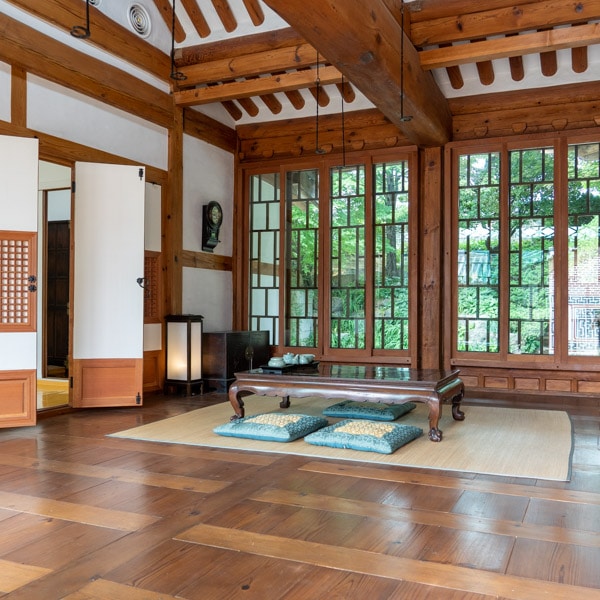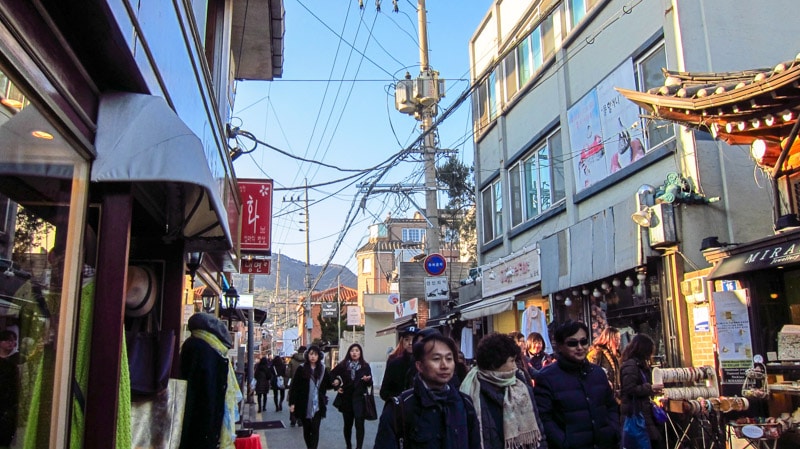
Baek In-je House Museum is a museum and cultural heritage site located in the Gahoe-dong neighborhood of Bukchon Hanok Village. Dating back over 100 years, the house is one of the finest examples of a modern hanok (traditional Korean house) from the period. Though built using traditional styles, the house uses modern techniques of the time including glass windows, doors, and red bricks.
The house was built by bank executive Han San-ryong in 1913 during a period when Korea was under Japanese rule. Over the years, the house has had many owners. One of them was Baek In-je, a renowned doctor and surgeon who bought the house in 1944. But, it was not until 2015 that the house opened to the public as a museum.
Baek In-je House is one of the largest hanok in Seoul. And, thanks to its preservation, it is one of the best examples of a modern hanok in the city. Due to its historical and architectural value, the house was designated as Seoul Folklore Cultural Heritage Property No. 22.
Baek In-je House has many attributes that differentiate it from other upper-class houses of the same period. First, with a traditional hanok, the sarangchae (men’s quarters) and the anchae (women’s quarters) are completely separated. At Baek In-je House, these quarters are connected by a hallway, allowing residents to move between the rooms without going outside. Second, part of the anchae features a second floor. Both of these unique features are not found at other hanok of the time.
Baek In-je House Museum sits on 2,640 square meters (28,416 square feet) of land. And, the house is situated at one of the highest points in the area. Its elevated position allows for expansive views of the surrounding village.
Today, highlights of the Baek In-je House Museum include the sarangchae (men’s quarters), the anchae (women’s quarters), the byeoldangchae (detached quarters), and the spacious, peaceful garden. If you want to get a better look at these buildings, be sure to join one of the free guided English tours every Friday at 4:00PM.
Baek In-je House History
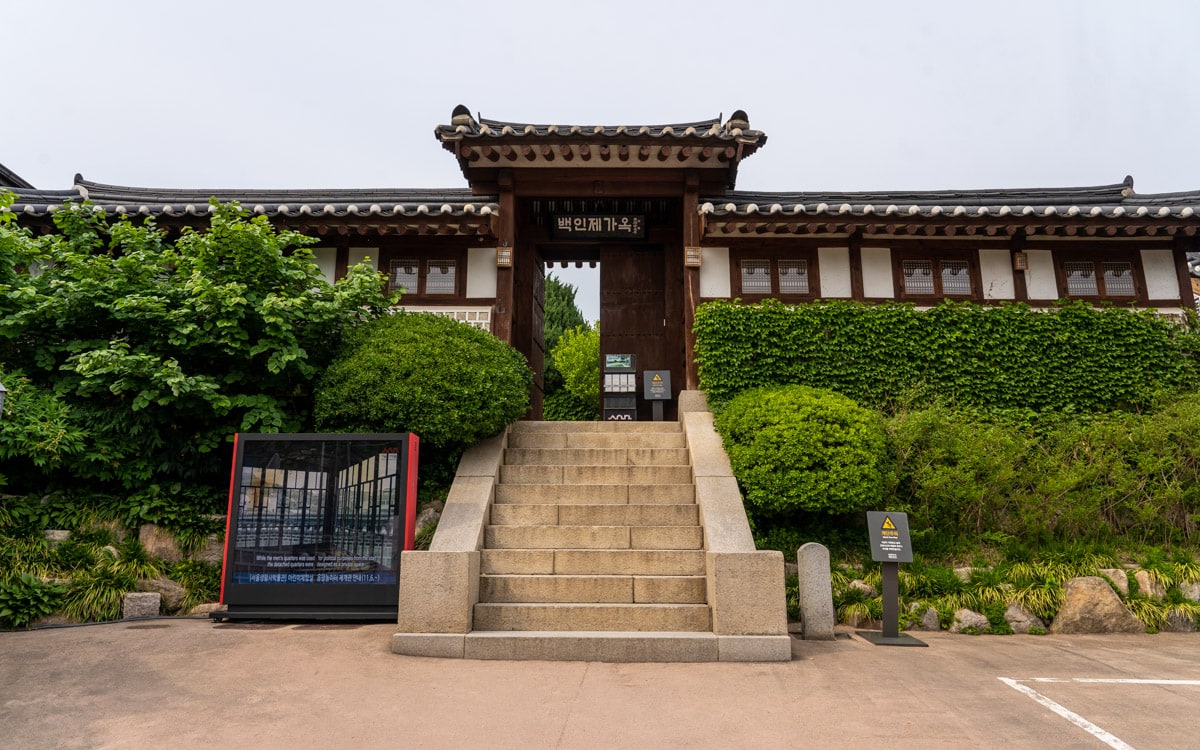
Han San-ryong, a wealthy executive from Hanseong Bank, built the house in 1913 using black pine from the Yalu River area. He lived here from 1913 to 1928. In June 1928, Hanseong Bank took over ownership of the house from Han San-ryong due to management issues at the bank.
From 1928 to 1935, Hanseong Bank owned the house. During this period, Cheondogyo, a local Korean religion, used the house as a meeting place. They also used the house to accommodate members who traveled to Seoul from around the country.
In January 1935, Choi Seok-ik purchased the house. Originally from Gaeseong, Choi Seok-ik was a wealthy journalist and publisher for the Joseon JoongAng Ilbo newspaper. He played an important role in the history of Korean nationalist journalism.
In September 1944, Baek In-je purchased the house. Baek In-je was born in 1899 in Jeongju, a city in southwestern Korea. During his senior year in college, he participated in the March 1st Movement of 1919. This movement called for the independence of Korea from Japanese rule. In 1928, Baek graduated from Tokyo Imperial University. He then went on to become the head professor of the Department of Surgery at Gyeongseong Medical College. Baek went on to become one of the best surgeons in Korea.
About 20 people lived in the house with Baek at any given time. Those who lived here included Baek’s wife, children, and father. Other visitors and employees also lived here. After Baek’s death, his wife Choi Gyeong-jin owned and lived in the house until 2009.
In November 2009, the Seoul Metropolitan Government purchased the property from Choi Gyeong-jin. On November 18, 2015, the historic hanok opened to the public as the Baek In-je House Museum.
Sarangchae (Men’s Quarters)

The sarangchae (men’s quarters) was a space reserved for the master of the house and his son. This is where Baek In-je resided. Though built using traditional hanok values, the glass windows, red bricks, and doors show its modern architectural touches. And, unlike other traditional hanok of the time, the sarangchae and anchae (women’s quarters) were connected by a hallway. This allowed residents to pass from one part of the house to the other without having to go outside in the cold or heat.

Inside the sarangchae is the sarangbang. This room, occupied by the master of the house, was also used as a reception area and as a study. Surrounding the sarangbang on all four sides is wooden floor space, a unique feature of the house. Attached to the sarangbang is the daecheong (wooden floor hall). This open floor room uses traditional lattice-shaped Japanese-style long plank wood for the floor.
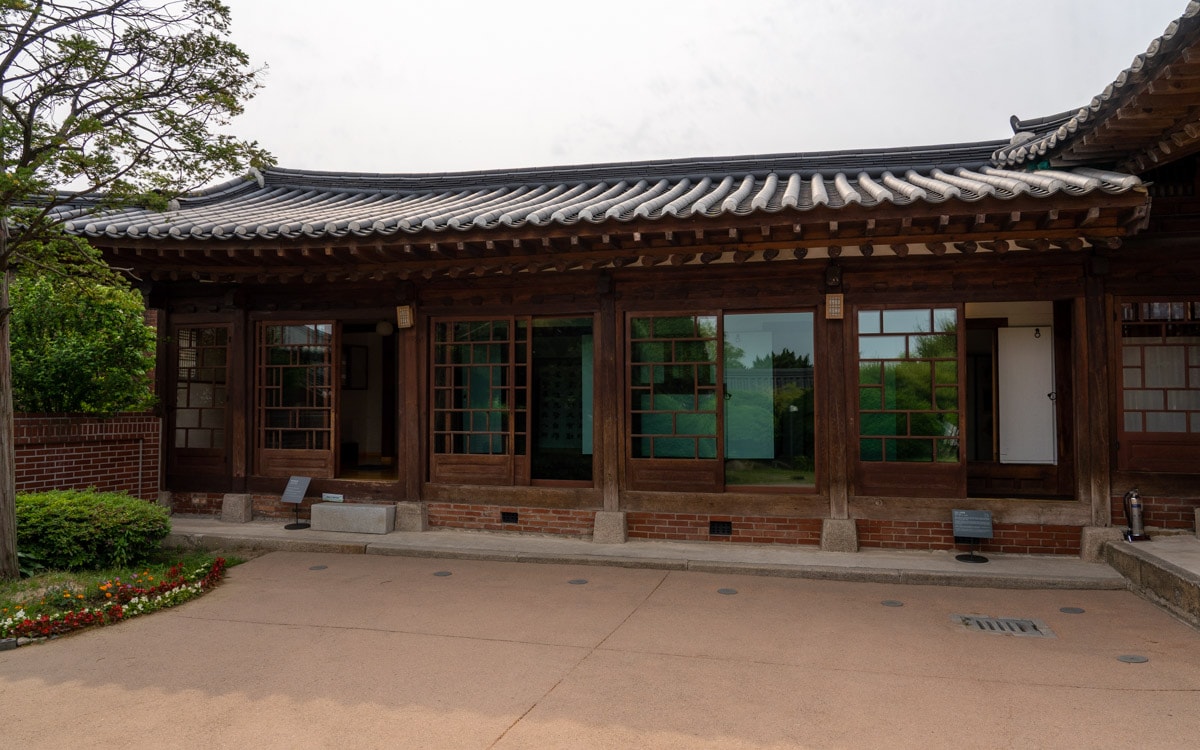
Located in the southern section of the sarangchae is the small sarangbang. The son of the household occupied this room. With most traditional hanok, the small sarangbang directly faces the main sarangbang. But here, a hallway connects these two rooms, which was not common at the time.
Sarangchae Garden

Outside of the sarangchae is a spacious garden known as the sarangchae garden. In the garden you will find open space, walking paths, trees, and colorful flowers. The garden takes up about half of the house grounds.
When touring the house in 1944, Baek In-je and his wife Choi Gyeong-jin saw the garden. They decided to buy the house when they saw the garden because of Choi’s love for gardening.
The family of the house used the garden area as a space for relaxation and as a place to stay cool in the summer. The garden also hosted many social activities and other large scale events. Baek In-je often held parties in the garden with friends, neighbors, and acquaintances. Famous figures who attended gatherings included activist Ahn Changho, writer Yi Gwangsu, and poet Chu Yo-han.
Anchae (Women’s Quarters)
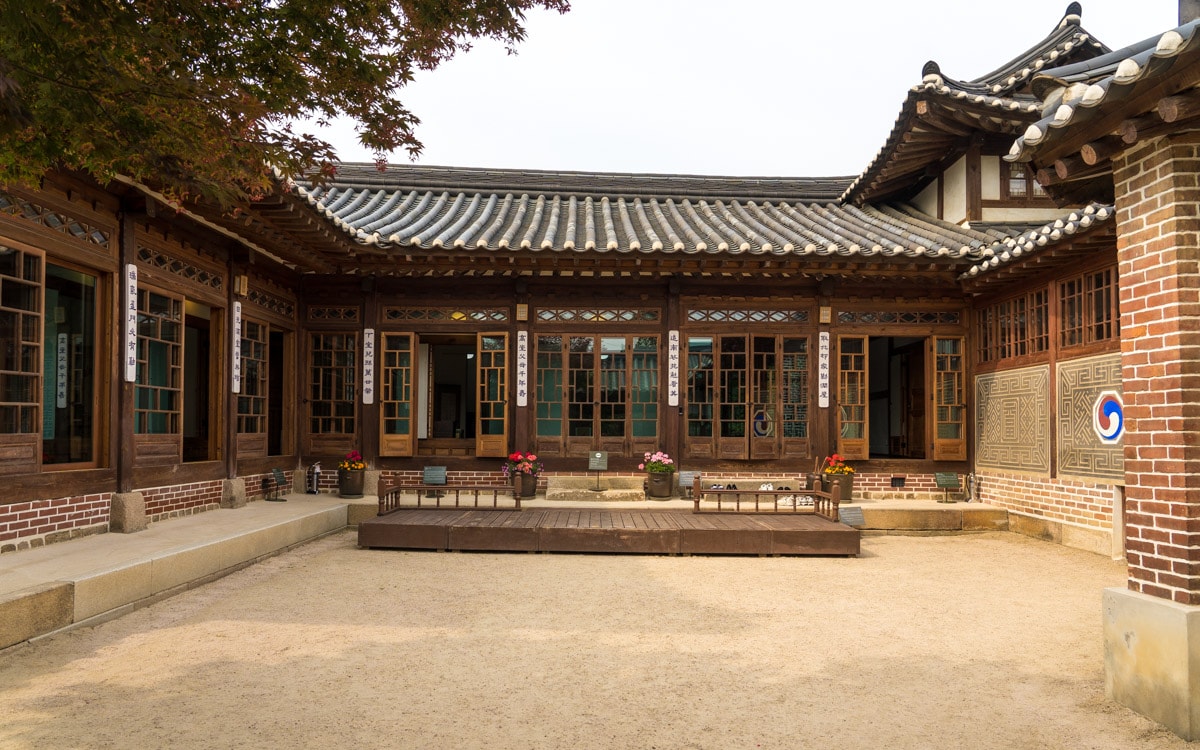
Surrounding the inner courtyard is the spacious anchae (women’s quarters). This was the living area for the lady of the house along with other family members. It was here where family members spent most of their time at the house. Outside visitors and men, other than those of the family, were not allowed to enter the anchae. With the middle gate closed, the anchae was completely closed off.
One of the most unique aspects of the anchae is its second floor. During the Joseon Dynasty, a hanok with a second floor was not common. This architectural feat is what makes the Baek In-je House one of the most historically important hanok in Bukchon Hanok Village.
In the innermost area of the anchae is the anbang (lady of the house room). This room, used by Baek In-je’s wife and younger children, symbolized the authority of the female owner. Attached to the anbang is a dressing room known as the uitbang (upper room). Inside this room are various pieces of furniture used to store clothes, valuables, and everyday items. Situated across from the anbang is the geonneonbang (opposite room). This room, used by the daughter-in-law, features a numaru (traditional Korean veranda). The numaru, which faces the backyard, provided a cool place to relax in the summer.
Located at the southern end of the L-shaped anchae is the halmeonibang (grandmother’s room). The mother-in-law used this room after she bestowed responsibilities to her daughter-in-law as the female master of the house.
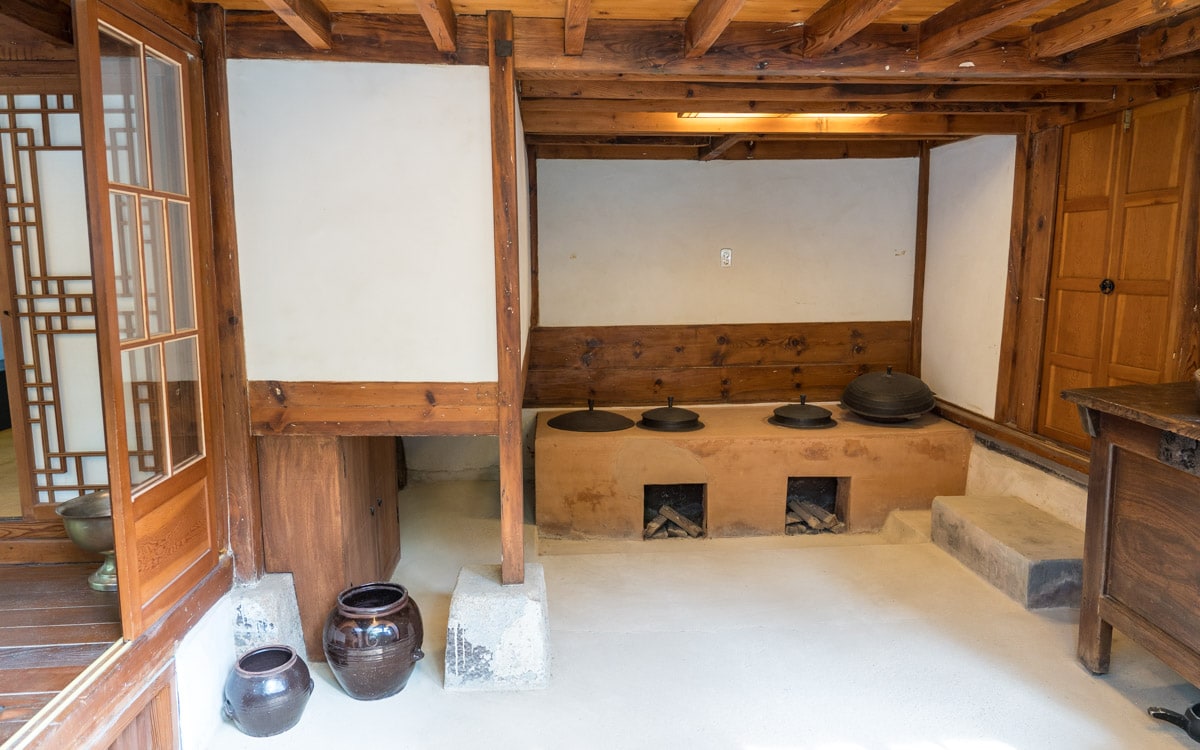
Also located in the anchae is the kitchen. The kitchen served both as a place for cooking and for heating purposes. A wood burning furnace located in the kitchen heated air which then flowed under the floor. As heat rose, it warmed the rooms surrounding the kitchen. This Korean traditional heating system is known as ondol.
Byeoldangchae (Detached Quarters)
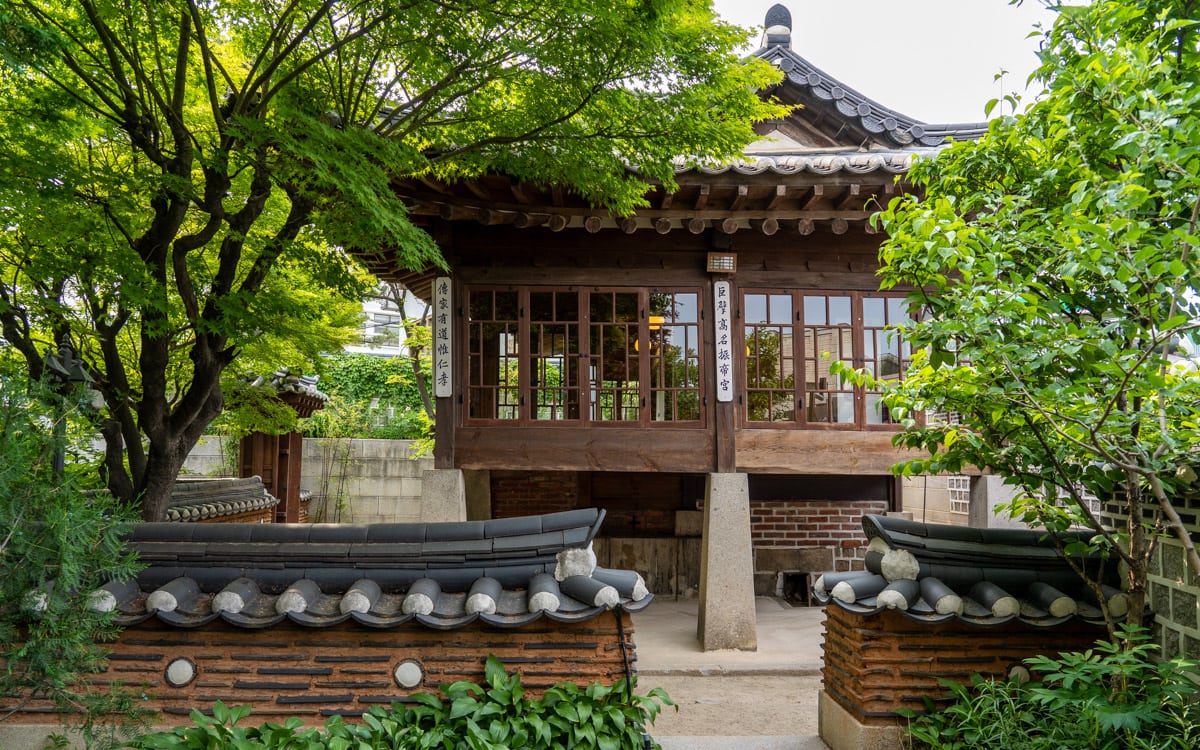
Located in the northwestern area of the house, furthest from the main gate, is the byeoldangchae (detached quarters). This is the innermost area of the grounds. The byeoldangchae served as a place for relaxation for the master.
The byeoldangchae is also the highest point on the property. Its elevated location and numaru (traditional Korean veranda) offered the master, residents, and guests panoramic views of the Bukchon Hanok Village below.
Baek In-je House Museum Information
Hours
Tuesday-Sunday: 9:00 AM - 6:00 PM (last admission at 5:30 PMMonday: Closed
Admission
FreeFree English tours are available every Friday at 4:00PM
Address
16 Bukchon-ro 7-gil, Jongno-gu, Seoul, Korea
GPS Coordinates: 37.58042, 126.98405
How to Get Here
Take Subway Line 3 to Anguk Station (Exit 2)Map
Additional Resources
Viator by TripAdvisor
Viator is a popular online platform that helps travelers book tours, activities, and unique experiences worldwide, including in Seoul. It connects users with a wide selection of options – from sightseeing tours to cultural events and outdoor adventures – all offered by local providers.
Klook
Klook offers discounted tickets and reservations for various attractions and services in Seoul, from theme parks and museums to tours and transportation options.
Rakuten
Save money while exploring Seoul with Rakuten's cashback program. Book your hotels or other services through Rakuten and enjoy cashback rewards and exclusive deals.
If you sign up using the link below, you could earn $30 cashback on your first purchase over $30.
Book Recommendations
For an immersive guide to Seoul, many travelers choose to bring a book along. Fodor's Seoul, for example, offers detailed recommendations on sights, restaurants, maps, and travel tips.
Nearby Sights
Bukchon Traditional Culture Center
The Bukchon Cultural Center is a hanok (Korean style building) that promotes the history and values of the traditional Korean Bukchon Hanok Village. The building was sold to the city of Seoul and reopened on October 29, 2002 as the Bukchon Traditional Culture Center. The hanok was once owned by the Min family.
Bukchon Hanok Village

Bukchon Hanok Village is a historic village dating back almost 600 years to the Joseon Dynasty which features hanok or Korean traditional houses. Bukchon means "northern village." The quaint residential village lies in a hilly neighborhood north of Cheonggyecheon Stream and between two royal palaces, Gyeongbokgung Palace, Changdeokgung Palace. A hanok is an traditional wooden house that were at a time found all over Korea.
National Folk Museum of Korea
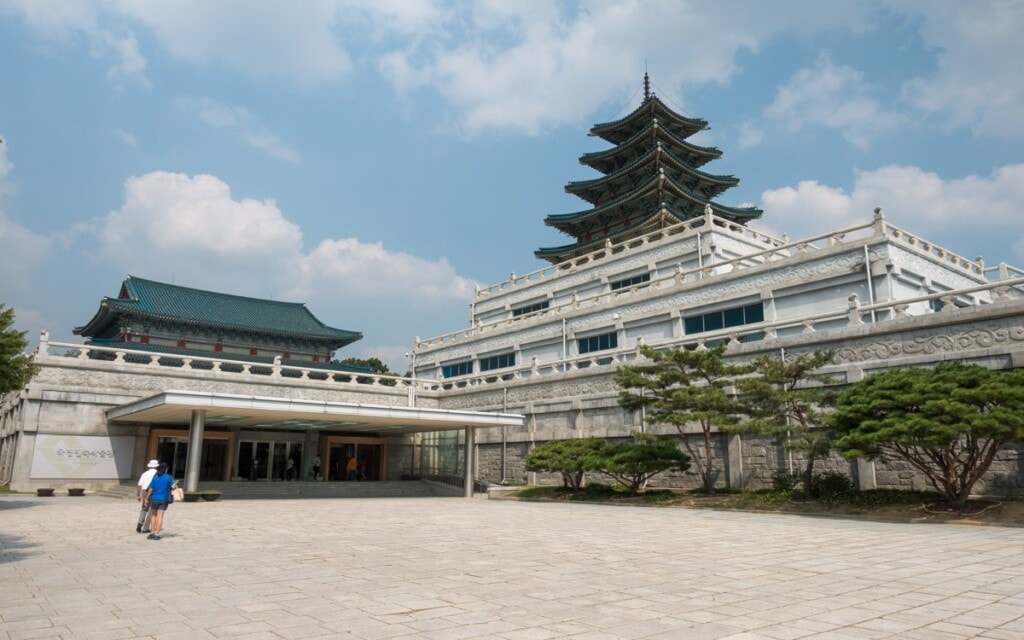
The National Folk Museum of Korea is a museum on the grounds of Gyeongbokgung Palace, not to be confused with the nearby National Palace Museum of Korea which is also found on the palace grounds. The museum dates back to April 25, 1946. In 1975, the museum moved to the grounds of Gyeongbokgung Palace.
Unhyeongung Palace
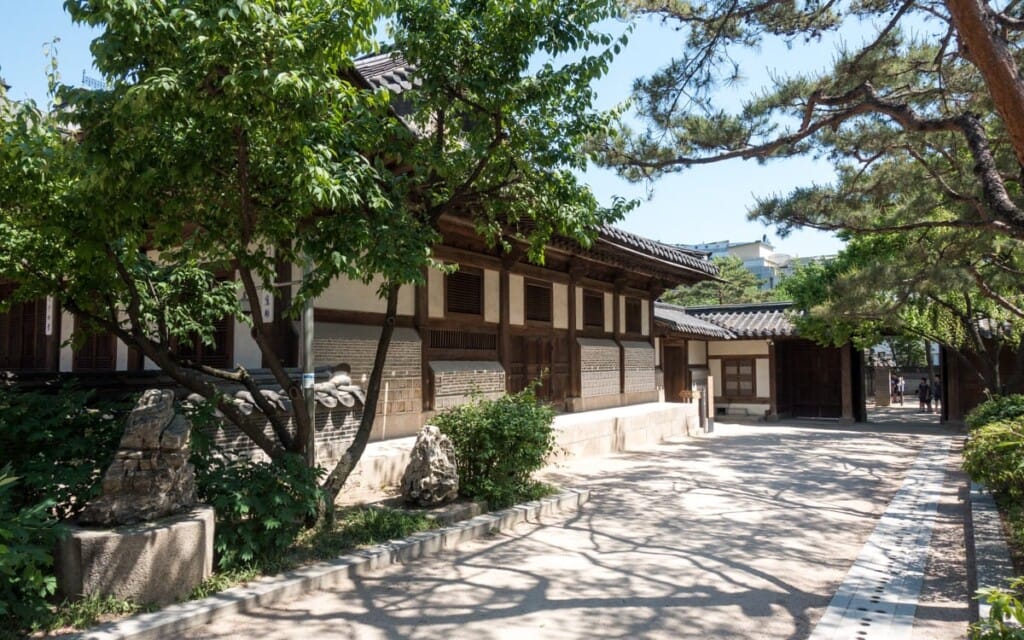
Unhyeongung Palace, also known as Unhyeongung Royal Residence, is a small palace located in the center of Seoul. Gojong, 26th king and emperor of Korea, was born at Unhyeongung Palace on September 8, 1852. He lived here until age 12 when he ascended to the throne. The residence was owned by Heungseon Daewongun, the father of Gojong.
Samcheongdong

Samcheongdong is an upscale neighborhood of Seoul that lies in a scenic area east of Gyeongbokgung Palace and Cheong Wa Dae (Blue House). The clean water and beautiful mountains in the area inspired the name of this trendy, youthful neighborhood. Surrounded by hills, the neighborhood is famous for its traditional hanok homes and modern, chic art galleries.
Last Updated on Aug 30, 2022


